What is people development: A complete guide with strategies & examples
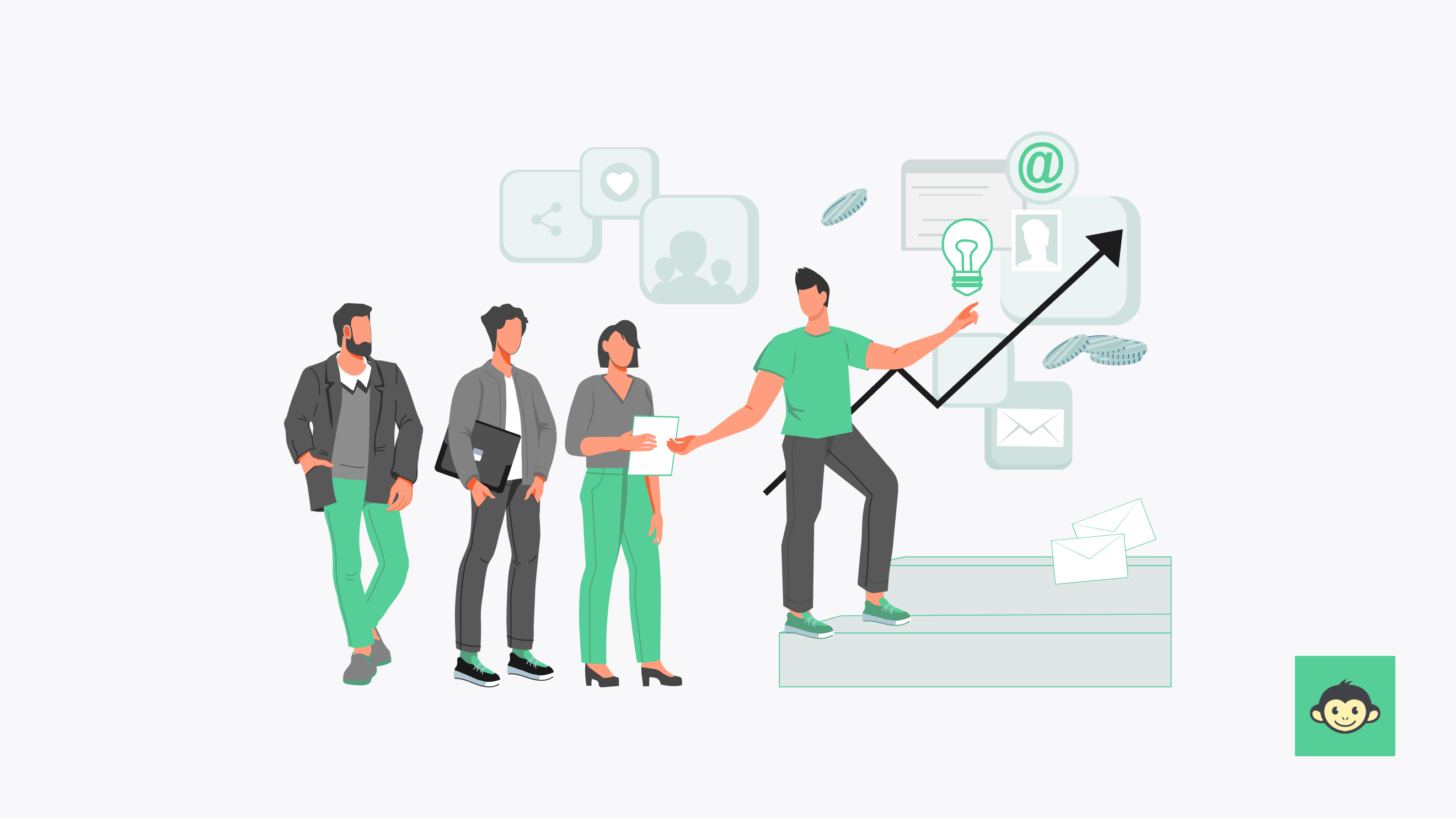
A study by LinkedIn found that 94% of employees would stay longer at a company that invested in their career development. With workforce expectations shifting and skill requirements evolving, the importance of people development cannot be overstated.
People development is more than just a buzzword, it encompasses a strategic approach aimed at enhancing employee skills, knowledge, and competencies. It not only equips individuals to excel in their roles but also aligns with an organization's growth trajectory.
From fostering a learning culture to implementing personalized development plans, let's unveil the intricacies of crafting a robust people development plan and framework that not only ensures individual growth but propels organizations towards sustained success.
What is people development?
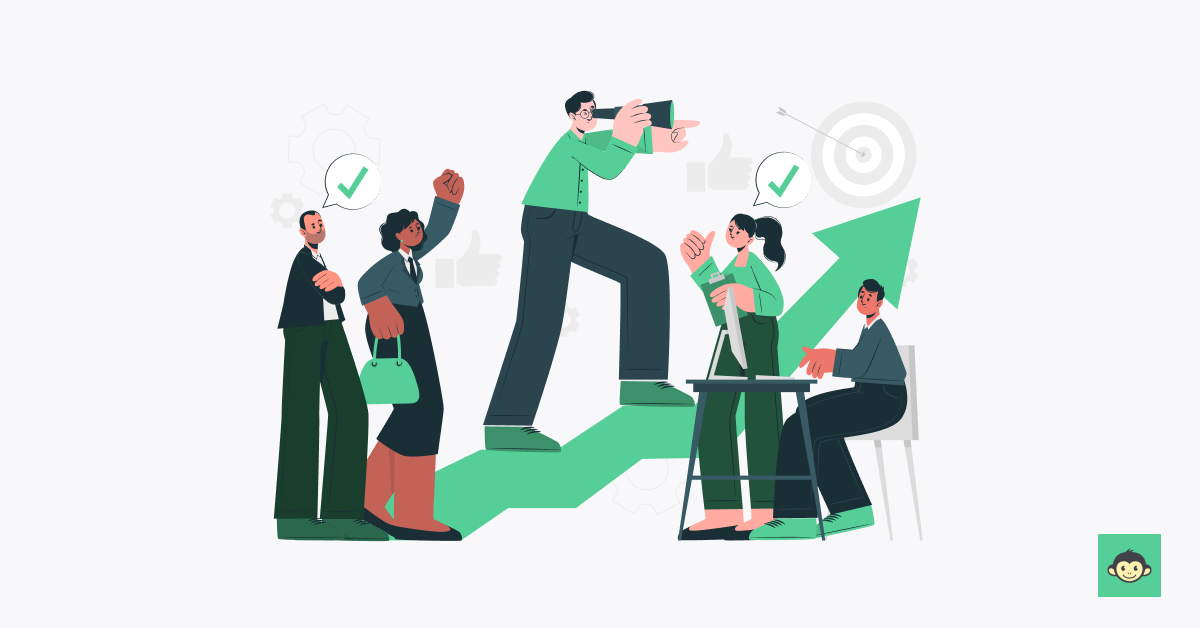
People development, also known as human or employee development, refers to the deliberate and strategic process of enhancing the skills, knowledge, capabilities, and overall potential of individuals within an organization. It encompasses a range of activities aimed at nurturing employees' personal and professional growth to maximize their performance, job satisfaction, and contribution to the organization's success.
People development contributes to higher employee engagement, improved job satisfaction, reduced turnover, and increased organizational agility. It aligns with the organization's long-term goals and strategies, enabling it to thrive by nurturing its most valuable asset – its people.
Furthermore, this holistic approach to development involves creating a learning culture within the organization, where continuous improvement is not just encouraged but ingrained in the company's DNA. It embraces diverse development methods, including training programs, mentorship initiatives, and opportunities for cross-functional experiences.
This multifaceted people development strategy ensures that individuals are equipped with the skills and knowledge necessary to adapt to dynamic industry landscapes and contribute effectively to the organization's growth.
What is a culture of development?
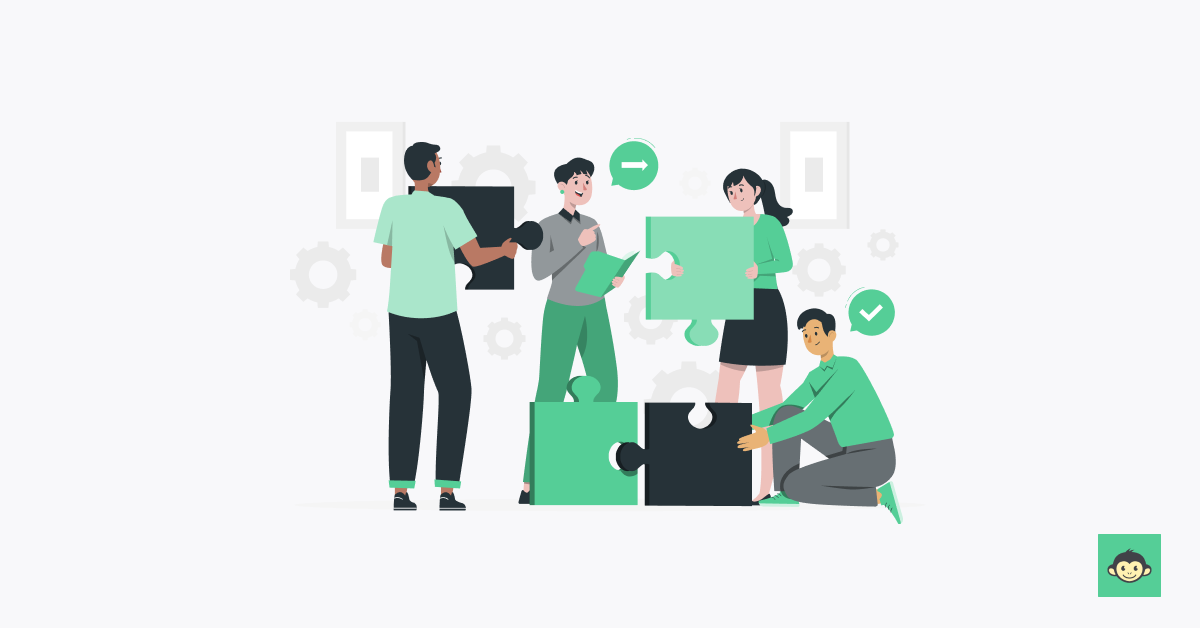
The culture of development in the workplace encompasses the shared values, attitudes, and practices that prioritize and encourage the continual growth and improvement of employees. This cultural framework is characterized by several key elements that contribute to a dynamic and progressive work environment.
Firstly, a culture of development places a premium on learning. It promotes a mindset where acquiring new skills and knowledge is not only welcomed but actively encouraged. This often involves providing employees with access to training programs, workshops, and resources that facilitate professional development.
To support this culture, companies can also recommend best math learning websites that help employees sharpen their analytical and quantitative skills, essential for big data and data-driven decision-making. These platforms offer a range of resources, from interactive lessons to practice problems, catering to various skill levels.
In addition, a culture of development emphasizes the importance of feedback. Regular, constructive feedback is integral to individual growth, and organizations fostering a developmental culture establish mechanisms for ongoing performance assessments.
This enables employees to understand their strengths and areas for improvement, fostering a continuous improvement ethos.
Furthermore, such a culture is marked by mentorship and collaboration. Senior employees mentor their junior counterparts, sharing insights and experiences. This not only facilitates knowledge transfer but also creates a supportive atmosphere where employees feel empowered to seek guidance and learn from one another.
A culture of development also acknowledges achievements and contributions. Recognizing and rewarding employees for their efforts reinforces the value placed on growth, motivating individuals to invest in their professional development.
What are the elements of people development?
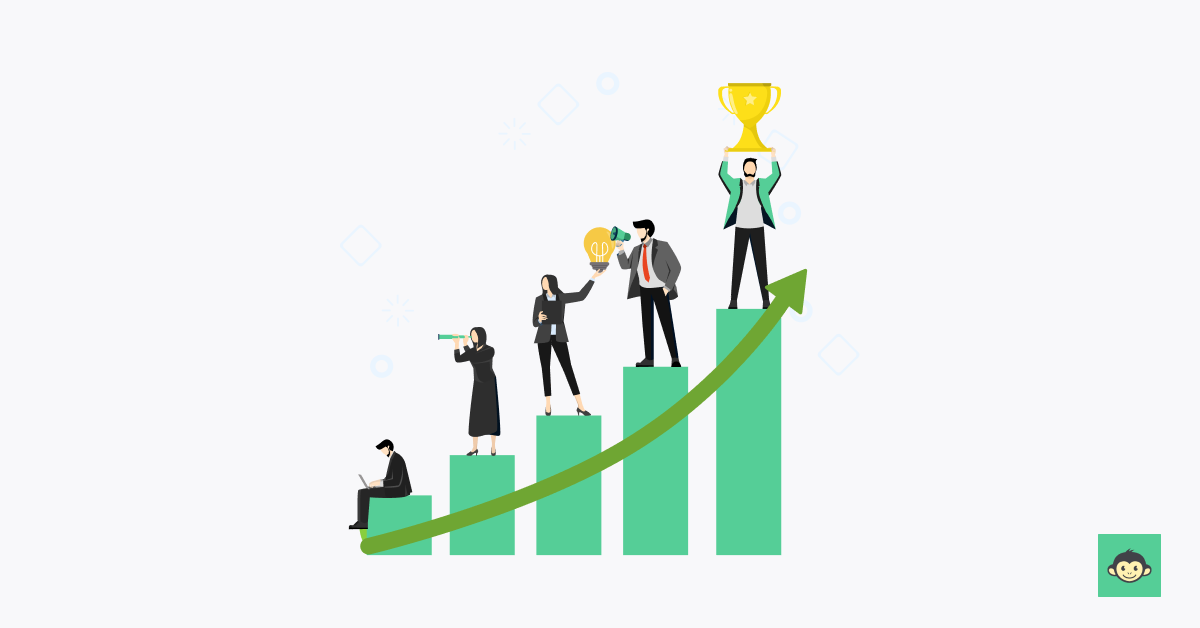
People development encompasses a holistic approach to nurturing and enhancing the skills, knowledge, and potential of individuals within an organization. It comprises several interconnected elements that contribute to personal growth, career advancement, and overall effectiveness. Here are the key elements of people development:
Training and learning programs
Organizations provide structured training and learning opportunities, both formal and informal, to enhance employees' skills, knowledge, and expertise.
Mentorship and coaching
Pairing individuals with experienced mentors or coaches fosters personalized guidance, accelerates skill development, and provides a platform for career advice.
Recognition
Providing constructive feedback and recognizing achievements cultivates a culture of continuous improvement and boosts morale.
Job rotation and cross-training
Exposing employees to different roles and functions broaden their skill set, enriches their experience, and encourages adaptability.
Developmental assignments
Assigning employees to challenging projects or initiatives outside their comfort zone hones their skills, fosters innovation, and builds confidence.
Learning culture
Fostering a culture of continuous learning and curiosity encourages employees to seek self-improvement and embrace new challenges.
Personalized development plans
Tailoring development plans to individual strengths, weaknesses, and aspirations ensures targeted growth and career advancement.
Feedback mechanisms
Providing avenues for employees to share their input on training programs, development opportunities, and overall growth strategies.
Leadership development
Identifying and grooming potential leaders within the organization through targeted programs and mentorship.
Wellness and work-life balance
Recognizing the importance of mental and physical well-being in personal development, which positively impacts professional growth.
Diversity and inclusion initiatives
Encouraging diversity of thought and creating an inclusive environment that allows for broader perspectives and personal growth.
Career path planning
Guiding employees in mapping out clear career paths align individual aspirations with organizational goals, fostering a sense of purpose and direction.
Continuous performance assessments
Regularly evaluating employee performance ensures that development initiatives are aligned with evolving skill requirements and organizational objectives.
Networking opportunities
Facilitating networking events and platforms enables employees to connect with industry professionals, fostering professional relationships and broadening perspectives.
Technology integration
Leveraging technological tools and e-learning platforms ensures that development opportunities are easily accessible and aligned with the evolving needs of a digital workplace.
Collaborative projects
Encouraging employees to collaborate on projects promotes teamwork, communication skills, and a shared sense of accomplishment.
Feedback culture
Instilling a culture where feedback is both given and received constructively creates an environment conducive to ongoing improvement and individual development.
Community engagement initiatives
Encouraging employees to participate in community service and social responsibility projects develops a sense of empathy, leadership, and teamwork, while contributing positively to society.
Emotional intelligence training
Providing programs focused on emotional intelligence enhances employees' ability to manage their emotions, understand others, and navigate social complexities effectively.
Succession planning
Implementing structured succession planning ensures that the organization is prepared for future leadership transitions, fostering stability and continuity by developing internal talent.
Innovation and creativity workshops
Offering workshops that stimulate creativity and innovative thinking empowers employees to generate new ideas, solve problems, and contribute to the organization's competitive edge.
Incorporating these elements into people development strategies creates a comprehensive framework that nurtures employees' potential, aligns individual aspirations with organizational goals, and contributes to the long-term success of the organization.
What’s the difference between people development and employee development?

People development and employee development are two concepts that focus on enhancing the skills, capabilities, and growth of individuals within an organization. While they are often used interchangeably, there are nuanced differences between the two:
People development
People development is a broader concept that encompasses the holistic growth of individuals, not just within their professional roles but also as individuals. It recognizes that employees are multidimensional beings with personal aspirations, skills, and potential beyond their job responsibilities. People development emphasizes:
- Personal growth: It addresses not only professional skills but also personal development areas like emotional intelligence, communication, and leadership traits.
- Career pathing: It considers long-term career goals and aspirations, aligning development opportunities with individual career trajectories.
- Well-being: It focuses on employee well-being, recognizing that a healthy work-life balance and overall wellness contribute to their growth and success.
- Holistic skill set: People development extends beyond technical skills, embracing a holistic skill set that includes creativity, critical thinking, and adaptability, enhancing an individual's versatility.
- Lifelong learning: Emphasizing continuous learning throughout an individual's career, people development encourages a mindset of curiosity and adaptability to navigate evolving industry landscapes.
- Community engagement: Recognizing the importance of community involvement, people development encourages employees to engage in social initiatives, fostering a sense of social responsibility.
Employee development
Employee development, on the other hand, is more task-oriented and job-specific. It primarily focuses on improving the skills and competencies required for an employee's current role or the next logical step in their career path. Employee development highlights:
- Job skills enhancement: It concentrates on enhancing technical, functional, and role-specific skills needed for an employee's current job or immediate career advancement.
- Training and workshops: Employee development often involves targeted training programs, workshops, or certifications that directly contribute to improving job performance.
- Performance improvement: It aims to bridge gaps in an employee's performance by addressing specific areas where they might need improvement to excel in their role.
- Task efficiency: Employee development aims at increasing task efficiency and productivity by honing specific job-related skills, ensuring employees perform optimally in their roles.
- Job-specific knowledge: It delves deep into cultivating specialized knowledge required for a particular job or industry, ensuring employees are well-equipped for the demands of their positions.
- Role-specific competencies: Employee development focuses on building competencies that are directly applicable to an individual's current role, optimizing their performance within their defined responsibilities.
While both people development and employee development aim to enhance individual growth, people development takes a broader approach, considering personal and holistic growth, while employee development is more focused on job-specific skills and performance improvement.
Organizations that effectively balance both aspects create a supportive environment where employees can thrive both professionally and personally.
Key areas of development for employee examples
Organizations that invest in the growth of their employees not only enhance individual performance but also contribute to the overall success of the company. Here are the key areas of development for employees, each exemplifying the diverse facets of professional growth.
- Technical proficiency: Employees should continuously enhance their technical skills to keep their own pace with evolving industry trends. This may involve mastering new software, staying updated on the latest technologies, or acquiring certifications relevant to their roles.
- Leadership and management skills: Developing leadership abilities is essential for those aspiring to move into managerial positions. This includes honing communication skills, decision-making capabilities, and the ability to inspire and guide a team toward common goals.
- Adaptability and resilience: In today's dynamic business environment, adaptability is a prized quality. Employees should be encouraged to develop resilience, the ability to navigate change, and maintain productivity even in the face of challenges.
- Effective communication: Clear and concise communication is fundamental in any workplace. Employees can benefit from training in written and verbal communication, as well as in active listening, ensuring a smooth flow of information within the organization.
- Emotional intelligence: The ability to understand and manage one's emotions, as well as empathize with others, is a hallmark of emotional intelligence. This skill is vital for building positive workplace relationships and fostering a collaborative environment.
- Problem-solving and critical thinking: Employees who can analyze situations critically and devise effective solutions are invaluable. Organizations should encourage the development of problem-solving skills through workshops, brainstorming sessions, and real-world challenges.
- Time management and productivity: Efficient time management is crucial for meeting deadlines and optimizing productivity. Training in time management techniques, goal setting, and prioritization can significantly enhance an employee's ability to deliver high-quality work within specified timeframes.
Benefits of people development at the workplace

Investing in people development at the workplace reaps multifaceted benefits that contribute to organizational growth and success:
Enhanced performance
People development programs equip employees with new skills and knowledge and accelerate employee development, boosting their performance and productivity, and leading to improved individual and team outcomes.
Talent retention
Organizations that prioritize employee growth and development tend to retain top talent. Employees feel valued and engaged, reducing turnover and recruitment costs.
Increased engagement
When employees see opportunities for growth, they become more engaged and committed to their roles. This translates into higher job satisfaction and morale.
Innovation culture
Continuous learning fosters an environment where employees feel empowered to innovate. They bring fresh ideas, contributing to the company's innovative edge.
Adaptability
Skilled and adaptable employees are better equipped to handle change, contributing to a more agile and resilient organization.
Leadership pipeline
People development cultivates future leaders within the organization. It ensures a pool of qualified candidates for higher positions, promoting internal promotions.
Positive company culture
A focus on development creates a positive company culture where employees feel valued and motivated, leading to a harmonious and cohesive work environment.
Market competitiveness
A skilled workforce enhances an organization's competitiveness, enabling it to better respond to market demands and changes.
Long-term growth
People development isn't just about the present; it sets the stage for long-term growth by building a capable and adaptable workforce.
Enhanced employee satisfaction
Investing in people development programs demonstrates a commitment to employee growth, leading to increased job satisfaction and a more positive work environment.
Improved collaboration
A focus on individual development encourages collaboration as employees bring diverse skills and knowledge to team projects, fostering a culture of teamwork.
Enhanced problem-solving
Continuous learning sharpens employees' problem-solving skills, enabling them to navigate challenges effectively and contribute to innovative solutions.
Global competence
People development programs that include cross-cultural training prepare employees to work effectively in a globalized business environment, enhancing the organization's global competence.
By investing in people development, organizations foster a culture of continuous improvement, innovation, and adaptability. This not only benefits employees but also contributes to the overall success and sustainability of the organization.
Personal development in the workplace
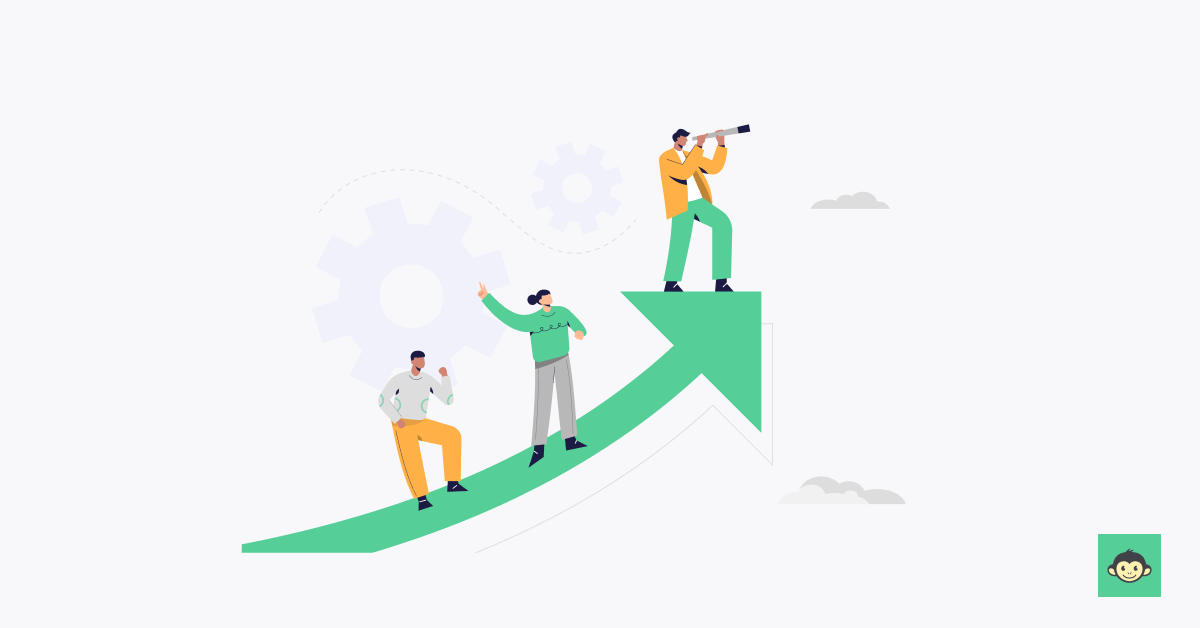
Personal development in the workplace is a vital component for fostering a culture of continuous improvement and ensuring individual growth aligns with organizational objectives. Here are ten key pointers highlighting the significance of personal development in a professional setting:
- Self-awareness: Encouraging employees to cultivate self-awareness is foundational for personal development. Understanding one's strengths, weaknesses, and areas for improvement enables individuals to chart a purposeful path for their professional growth.
- Goal setting: Establishing clear and measurable goals is a cornerstone of personal development. Employees should be guided to set both short-term and long-term objectives, aligning them with their career aspirations and the company's vision.
- Feedback mechanism: A robust feedback system facilitates personal growth by providing insights into performance and areas requiring enhancement. Constructive feedback, when delivered regularly, empowers individuals to refine their skills and approaches.
- Learning opportunities: Providing access to continuous learning opportunities, whether through workshops, seminars, or online courses, equips employees with the knowledge and skills necessary to adapt to changing industry landscapes.
- Mentorship programs: Establishing mentorship programs connects experienced professionals with those seeking guidance. This fosters a transfer of knowledge, skills, and valuable insights, promoting personal and professional development.
- Networking skills: Developing employees' effective networking skills is pivotal in today's interconnected business world. Encouraging employees to expand their professional networks enhances their visibility, opens avenues for collaboration, and contributes to personal growth.
- Time management: Efficient time management is a skill that significantly impacts personal development. Cultivating this ability enables employees to prioritize tasks, meet deadlines, and maintain a healthy work-life balance.
- Resilience and stress management: Personal development involves building resilience to cope with challenges and stress. Providing resources and training in stress management techniques contributes to employees' mental and emotional well-being.
- Cross-functional exposure: Exposure to different facets of the business through cross-functional experiences broadens an employee's skill set. This holistic approach to personal development prepares individuals for diverse roles and responsibilities.
- Recognition and rewards: Acknowledging and rewarding employees for their achievements and contributions fosters a positive environment conducive to personal development. Recognition serves as a motivational factor, inspiring individuals to excel in their roles.
17 Essential people development skills you need as a leader

As a leader, honing essential people development skills is crucial to empower and elevate your team's potential. Here are 17 creative and unique skills to master:
- Empathetic agility: Navigate diverse personalities with empathetic agility, understanding individual needs and adapting your approach for effective guidance.
- Storytelling savvy: Harness the power of storytelling to convey visions and lessons, making complex ideas relatable and inspiring to your team.
- Curiosity cultivation: Foster a culture of curiosity by encouraging questions, curiosity-driven projects, and exploration of new ideas.
- Feedback fusion: Skillfully blend positive and constructive feedback, fostering growth while bolstering team morale and motivation.
- Resilience nurturing: Teach your team how to embrace failures as learning opportunities, building resilience and encouraging risk-taking.
- Cultural compass: Develop a cultural compass that appreciates diverse backgrounds, fostering inclusivity and tapping into a spectrum of perspectives.
- Growth mindset guide: Lead by example in embracing a growth mindset, encouraging your team to continuously learn, adapt, and seek improvement.
- Coaching craftsmanship: Master the art of coaching, guiding team members to uncover their strengths, overcome challenges, and set clear goals.
- Collaboration catalyst: Champion cross-functional collaboration, bridging gaps between departments and unlocking synergies for innovative solutions.
- Innovation instigator: Spark innovation by creating an environment that encourages experimentation, risk-taking, and creative problem-solving.
- Tech-intuition: Develop an intuitive understanding of emerging technologies, guiding your team in leveraging them for enhanced efficiency and effectiveness.
- Decision resonance: Make decisions that resonate with your team's values, goals, and aspirations, fostering a sense of ownership and alignment.
- Adaptive communication: Tailor your communication style to cater to diverse personalities and situations, ensuring clarity and engagement among your team members.
- Conflict resolution competence: Cultivate the ability to address conflicts within the team promptly, fostering a harmonious work environment and promoting team cohesion.
- Strategic visionary: Develop the skill to articulate and implement a strategic vision that aligns with organizational goals, guiding your team toward a shared future.
- Change management expertise: Navigate organizational changes with finesse, facilitating smooth transitions and ensuring your team remains resilient in the face of change.
- Emotional intelligence mastery: Hone your emotional intelligence to understand and manage your emotions and those of your team, fostering a positive and collaborative work atmosphere.
Mastering these unique people development skills not only propels your team's growth but also solidifies your role as a visionary and impactful leader who nurtures individual potential while driving collective success.
Valuable lessons from effective people leaders
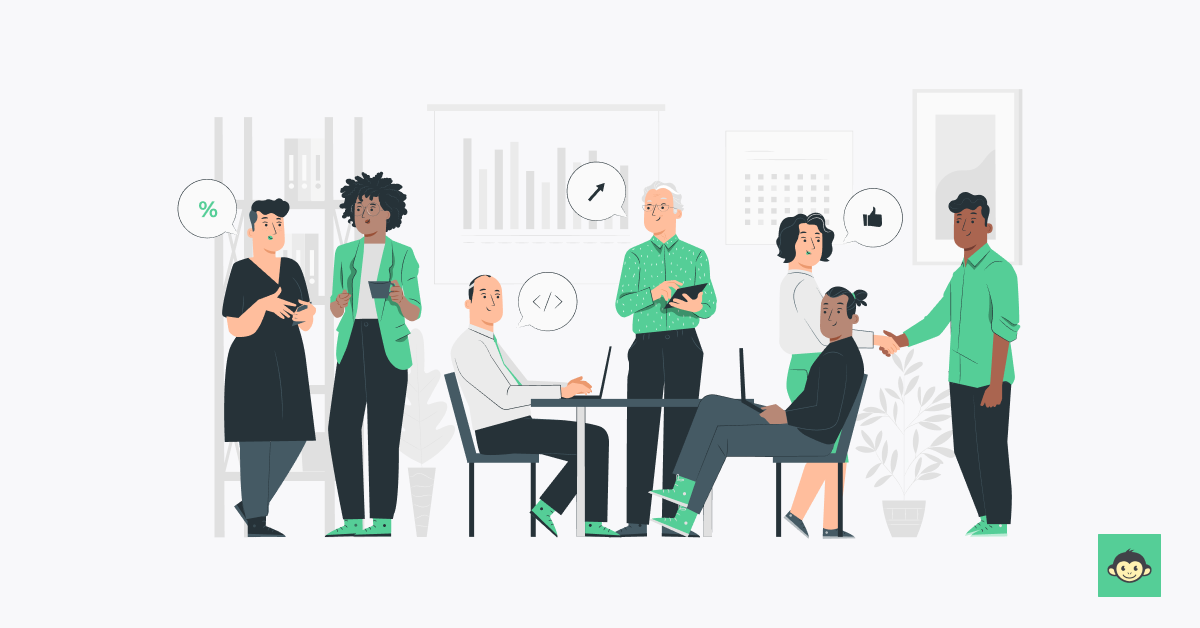
Effective people leaders serve as beacons of inspiration and impart invaluable lessons that transcend industries. Here are lessons drawn from the leadership approaches of five notable individuals, each contributing unique insights to the realm of effective leadership.
Lesson from Bill Gates
Bill Gates, co-founder of Microsoft, emphasizes the importance of fostering a culture of innovation within an organization. Leaders should encourage their teams to think creatively, take calculated risks, and learn from failures.
Gates believes that a culture of innovation not only keeps a company at the forefront of its industry but also empowers employees to contribute their best ideas.
Lesson from Sheryl Sandberg
Sheryl Sandberg, former Facebook's (Meta’s) Chief Operating Officer, underscores the significance of diversity and inclusion in leadership. She advocates for creating environments where individuals from diverse backgrounds feel valued and heard.
Leaders should actively champion diversity, recognizing its role in fostering creativity, resilience, and a broader perspective within the team.
Lesson from Jack Welch
The late Jack Welch, former CEO of General Electric, prioritized employee development as a cornerstone of effective leadership. Welch believed in cultivating a culture of continuous learning and growth.
Leaders should invest in their teams, providing opportunities for skill development, mentorship, and advancement. A workforce that constantly evolves is better equipped to navigate change and contribute to the organization's success.
Lesson from Angela Ahrendts
Angela Ahrendts, former Senior Vice President at Apple, highlights the importance of cultivating a positive company culture. She emphasizes the role of leaders in shaping the work environment.
Leaders should instill a sense of purpose, promote open communication, and prioritize employee well-being. Ahrendts believes that a positive culture not only attracts top talent but also fosters collaboration and innovation.
Lesson from Sundar Pichai
Sundar Pichai, CEO of Google and Alphabet, underscores the significance of leading with empathy and humility. Pichai believes in understanding the perspectives of team members and approaching leadership with a sense of humility.
Leaders should actively listen, demonstrate empathy, and acknowledge their own areas for improvement. Pichai's leadership style emphasizes the human side of management, building strong connections within the team.
Top 10 people development strategies you should try in 2023

In 2023, innovative people development strategies can drive employee growth and organizational success. Here are ten creative approaches to consider:
- Customized learning pathways: Tailor development plans based on individual strengths and aspirations, providing targeted resources and training for each employee.
- Microlearning moments: Embrace microlearning modules that offer bite-sized, on-demand content, making learning convenient and fitting seamlessly into busy schedules.
- Skill swapping sessions: Organize "skill swap" sessions where employees teach each other their unique skills, fostering a culture of peer-to-peer learning and collaboration.
- Reverse mentorship programs: Pair seasoned leaders with junior employees to foster cross-generational learning, benefiting from fresh perspectives and technological insights.
- Project-based learning: Integrate learning with real projects, allowing employees to apply new knowledge immediately, enhancing retention and skill application.
- Digital badging system: Implement a digital badging system that rewards employees for completing specific learning milestones, boosting motivation and recognition.
- Innovation hackathons: Host hackathons to solve real business challenges, promoting creative problem-solving and tapping into employees' innovative potential.
- Leadership simulation games: Develop virtual leadership simulation games that offer a risk-free environment for employees to practice leadership skills.
- Lunch and learn series: Organize informal lunchtime sessions where employees share insights, experiences, and lessons, promoting a culture of continuous learning.
- Global learning exchanges: Facilitate international learning exchanges where employees spend time in different company offices, fostering cultural awareness and sharing best practices.
These innovative strategies not only cater to diverse learning preferences but also reflect the dynamic nature of today's workforce, driving holistic people development in 2023 and beyond.
Choosing the best people development methods
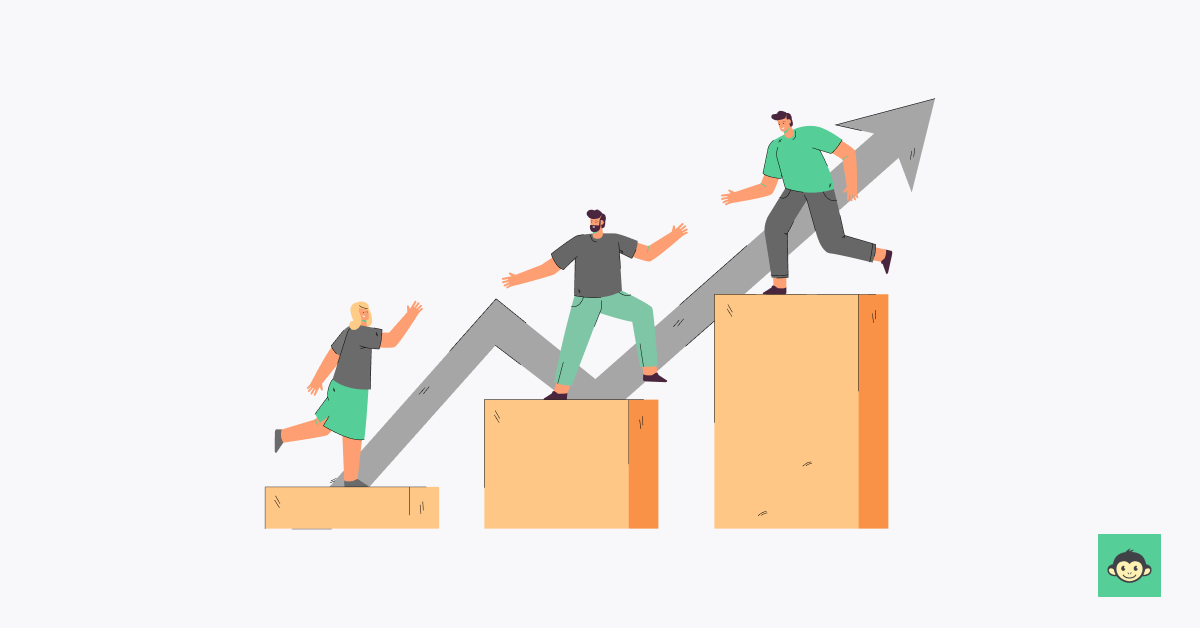
Choosing the most effective people development methods is a strategic imperative for organizations committed to fostering a skilled and dynamic workforce. The selection process involves careful consideration of various factors to ensure that the chosen methods align with organizational objectives and cater to the diverse needs of employees.
One crucial element in this decision-making process is understanding the specific skills and competencies required for both individual roles and the overall success of the organization.
Conducting thorough skills assessments and competency analyses provides insights into the areas where employees need development, guiding the selection of targeted methods.
Tailoring development methods to the learning preferences of the workforce is equally pivotal. Some individuals may thrive in traditional classroom settings, while others may prefer online courses, mentorship programs, or hands-on experiences.
Recognizing and accommodating these preferences enhances the effectiveness of the chosen development methods.
The integration of technology is increasingly becoming a cornerstone of effective people development. E-learning platforms, webinars, and virtual training sessions offer flexible and scalable solutions, particularly in a globalized and digitally connected work environment.
Embracing technology ensures that development opportunities are accessible to employees across various locations and time zones.
Furthermore, feedback mechanisms play a critical role in refining and optimizing development strategies. Regularly seeking input from employees regarding the effectiveness of existing programs allows organizations to make informed adjustments and enhancements.
Continuous improvement, guided by employee feedback, ensures that people development methods remain relevant and impactful.
What is a People Development Manager?

A People Development Manager is a strategic role within an organization focused on enhancing the skills, capabilities, and overall development of its workforce. This position is integral to fostering a culture of continuous learning and professional growth, ensuring that employees are well-equipped to meet both current and future organizational needs.
The primary responsibilities of a People Development Manager include designing, implementing, and overseeing training and development programs tailored to various levels of staff.
They assess the organization's developmental needs through rigorous analysis and feedback mechanisms, identifying skill gaps and potential areas for improvement. By collaborating with departmental heads and senior management, they ensure that development initiatives align with the effective people development strategy.
Moreover, a People Development Manager plays a crucial role in mentorship and coaching programs, facilitating the pairing of less experienced employees with seasoned mentors. They also leverage technology, such as learning management systems and e-learning platforms, to provide accessible and efficient training solutions.
Evaluating the effectiveness of these programs is another critical aspect, requiring the collection and analysis of performance data to make informed adjustments.
How does HR’s role differ from managers in people development?

The Human Resources (HR) role in people development focuses primarily on strategic oversight, policy formulation, and the facilitation of development programs across the organization. HR professionals are responsible for identifying overarching training needs through comprehensive workforce analysis and aligning these needs with the organization's strategic objectives.
HR also plays a crucial role in talent acquisition, onboarding, and succession planning, ensuring that new hires and internal candidates are provided with adequate development opportunities from the outset.
They manage relationships with external training providers, negotiate contracts, and oversee the integration of advanced learning technologies.
Furthermore, HR monitors the effectiveness of development programs by gathering and analyzing feedback, performance metrics, and other relevant data.
This strategic oversight allows HR to make informed recommendations for continuous improvement, ensuring that development efforts are impactful and aligned with organizational goals. Through these functions, HR ensures a cohesive and strategic approach to people development across the organization.
Building an effective people development team
Building an effective people development team is a strategic imperative for organizations aiming to cultivate a skilled and motivated workforce. Establishing such a team requires a systematic approach, incorporating key elements that contribute to its success.
- Define clear objectives: Clearly define the objectives of the people development team. Whether it's closing skill gaps, fostering leadership development, or enhancing overall employee engagement, having well-defined goals provides direction for the team's efforts.
- Diverse skill sets: Assemble a team with diverse skill sets that collectively cover the spectrum of people development. This may include professionals with expertise in training and development, learning technologies, leadership coaching, and talent management.
- Understanding organizational needs: Develop a deep understanding of the organization's needs and challenges. Conduct thorough assessments to identify skill gaps and areas for improvement. This knowledge forms the foundation for targeted career development initiatives.
- Strategic planning: Formulate a strategic plan that aligns with the organization's overall business strategy. The people development team should work in tandem with other departments to ensure that their efforts contribute directly to the achievement of organizational objectives.
- Utilize technology: Leverage technology to enhance the effectiveness of people development initiatives. Invest in learning management systems, e-learning platforms, and other tools that facilitate continuous learning and development.
- Customized training programs: Develop customized training programs that cater to the unique needs of different departments and roles within the organization. Tailoring programs ensures that they are relevant and impactful, addressing specific skill requirements.
- Promote a culture of learning: Instill a culture of continuous learning within the organization. The people development team should actively promote the value of ongoing education and create an environment where employees feel encouraged to invest in their professional growth.
- Measure and evaluate: Implement robust measurement and evaluation mechanisms to assess the impact of development initiatives. This involves tracking key performance indicators, collecting feedback, and making data-driven adjustments to enhance program effectiveness.
- Communication and engagement: Foster open communication and engagement with employees. The people development team should actively seek input from staff, ensuring that their needs and preferences are considered in the design and delivery of development programs.
- Adaptability and flexibility: Remain adaptable and flexible in response to changing organizational needs and industry trends. The ability to pivot and adjust development strategies ensures that the team remains agile and responsive to evolving challenges.
- Collaborative partnerships: Build strong partnerships with external training providers, industry experts, and educational institutions. These collaborations can bring fresh perspectives, specialized knowledge, and innovative practices into the organization's people development initiatives.
- Leadership involvement: Ensure active involvement and support from the organization's leadership. Leaders should champion people development efforts, participate in key initiatives, and model a commitment to continuous learning.
- Resource allocation: Secure adequate resources, including budget, time, and personnel, to effectively implement people development strategies. Proper resource allocation is crucial for the success and sustainability of development programs.
- Employee recognition programs: Develop programs that recognize and reward employees' commitment to their development. Recognition can include certifications, awards, or public acknowledgment of achievements, motivating employees to engage in continuous learning.
How to measure people development in your workplace?

Measuring people development in the workplace involves a comprehensive approach that considers various aspects of employee growth and organizational impact. Here's a structured approach to effectively measure people development:
Utilize key performance indicators (KPIs)
Identify relevant KPIs that align with your development goals. KPIs could range from training completion rates and skill assessments to employee engagement scores and promotion rates.
Conduct skill assessments
Regularly evaluate employees' skills before and after development programs to gauge improvement. This could involve assessments, tests, or practical exercises.
Track performance metrics
Monitor changes in employee performance metrics post-development. These metrics could include productivity levels, project completion times, and quality of work.
Employee engagement
Measure changes in employee engagement levels as a result of successful people development initiatives. Higher engagement often correlates with effective people development.
Promotion rates
Analyze the frequency of promotions within your organization. Effective people development should lead to increased internal promotions.
360-degree feedback
Gather feedback from peers, managers, and subordinates about the employee's growth and performance. This provides a holistic view of development.
ROI calculation
Calculate the Return on Investment (ROI) of people development initiatives by comparing the costs incurred with the benefits gained, such as increased productivity, employee retention, or reduced turnover.
Benchmarking
Compare your organization's people development metrics with industry benchmarks to understand how you fare on a larger scale.
Qualitative feedback
Collect qualitative feedback from managers and employees about the impact of development initiatives on job satisfaction, motivation, and skill enhancement.
By using a combination of these methods, organizations can gain a comprehensive understanding of the effectiveness of their people development efforts. This data-driven approach allows for continuous improvement and the optimization of talent development and programs to achieve desired outcomes.
This guide traverses through various strategies and examples that organizations can adopt to create a culture of continuous learning and growth. By recognizing that people are their most valuable assets, companies can implement tailored development programs, mentorship initiatives, and skill-building activities.
Through fostering a commitment to individual and collective growth, organizations not only empower their employees but also pave the way for enhanced performance, innovation, and long-term success.



